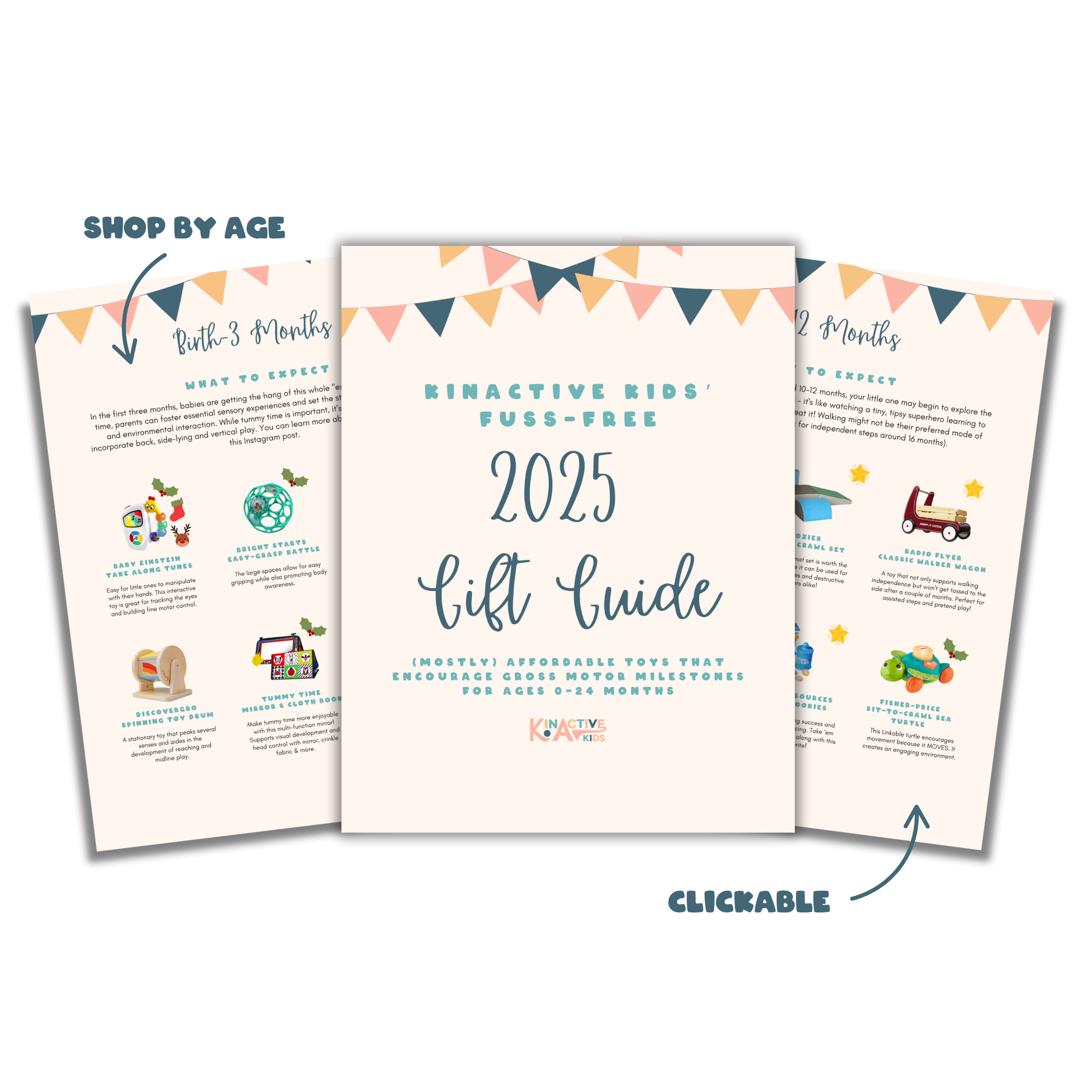The Ultimate Guide to Tummy Time


Alright, parents—let’s talk tummy time. You’ve probably heard that it’s important, but do you know why? Or when to start? Or what to do when your baby hates it with every fiber of their tiny being?
I’ve got you covered. We’re about to break down the why, when, and how of tummy time, bust some myths, and give you real-life, practical strategies to make it easier (for both you and your baby). Let’s go!
What Is Tummy Time & Why Should You Care?

Tummy time is exactly what it sounds like—your baby spending time on their belly while they’re awake and supervised. Sounds simple, right? But here’s the thing: it’s foundational for gross motor development.
Without enough time on their belly, babies can struggle with:
🚫 Weak core muscles
🚫 Flat spots on their head (yep, it’s a thing)
🚫 Late rolling, sitting, crawling, and walking
So, if you want your little one to sit up strong, crawl like a champ, and avoid a flat head—tummy time needs to be part of their daily routine.
When Should You Start?
The answer? DAY ONE.
That’s right—your newborn is ready for tummy time as soon as they enter the world (as long as they’re healthy and cleared by their pediatrician).
At first, it’s as simple as placing them on your chest and letting them lift and turn their head from cheek to cheek. This is their very first neck workout.
Not sure what’s normal? Here’s what to expect at different stages:
Birth to 6 Weeks
- Goal: Lifting and rotating head from one cheek to the other
- Best position? On your chest, across your lap, or with a rolled-up towel under their armpits
- Pro tip: Fresh air does wonders—take tummy time outside! Babies love the sensory input
6 Weeks to 3 Months
- Baby should be able to lift their head 45-90 degrees
- Add some fun by putting a mirror or toys in front of them
- Try tummy time over your legs—this is especially helpful for reflux babies
3 to 6 Months
- Now they’re pushing up on their elbows—yay!
- Make sure their elbows are in line with their shoulder, arms placement is crucial for tummy time
ssuccess (no arching!) - Introduce tummy time on a stability ball for more movement and engagement
6+ Months (AKA: “I’m Over This” Stage)
Your baby is probably rolling, sitting, or even crawling—and now, tummy time looks different. It’s all about functional positions like:
✔ Hands and knees (prepping for crawling)
✔ Side sitting (building core strength)
✔ Plank play (hello, arm strength!)
What If My Baby Hates Tummy Time?
You’re not alone—lots of babies resist tummy time at first. But skipping it isn’t the answer! Instead, switch things up to make it more comfortable and engaging.
Tummy Time Alternatives for Fussy Babies
- Vertical on your thighs – Provides support while still working those neck muscles
- Horizontal across your legs – A soothing alternative, especially for reflux babies
- Plank play over a soft surface – Adds movement and makes it feel less like work
- Stability ball tummy time – Engages core muscles while keeping things fun
The key is to find what works for your baby and gradually increase their tolerance.

The Right Way to Do Tummy Time
To get the most out of tummy time, proper positioning is everything.
- Support their elbows so they’re bearing weight through their arms (not just arching their back).
- Use an incline for younger babies (under 2 months). Their shoulders should be slightly above their hips to make it easier.
- For best results, try tummy time 5-10 min per every diaper change—it only takes a few minutes and makes a big difference!
Try this 5 times per diaper change—it only takes a few seconds and makes a big difference!
Myth Busting: The Truth About Tummy Time
“There’s such a thing as too much tummy time.”
Nope! The more variety, the better. The real issue is if a baby is only doing tummy time and not exploring other positions (like side play or sitting). Balance is key!
“My baby hates tummy time, so I should skip it.”
Wrong! If your baby doesn’t like tummy time, it usually means they need it even more. The trick is to modify the position until they’re more comfortable.
Final Thoughts: Why Tummy Time Matters
Tummy time isn’t just about keeping your baby busy—it’s a critical step in their motor development. The strength they build on their belly sets the stage for rolling, sitting, crawling, and walking.
If you’re struggling with tummy time or want to dive deeper into gross motor development, check out our Master Classes—I break it all down in a way that’s actually helpful. You can also explore this guide on gross motor development for more expert insights on how movement builds a strong foundation for your little one.
Want to see some of these tummy time strategies in action? Head to my Instagram and tap the Tummy Time highlight here.



